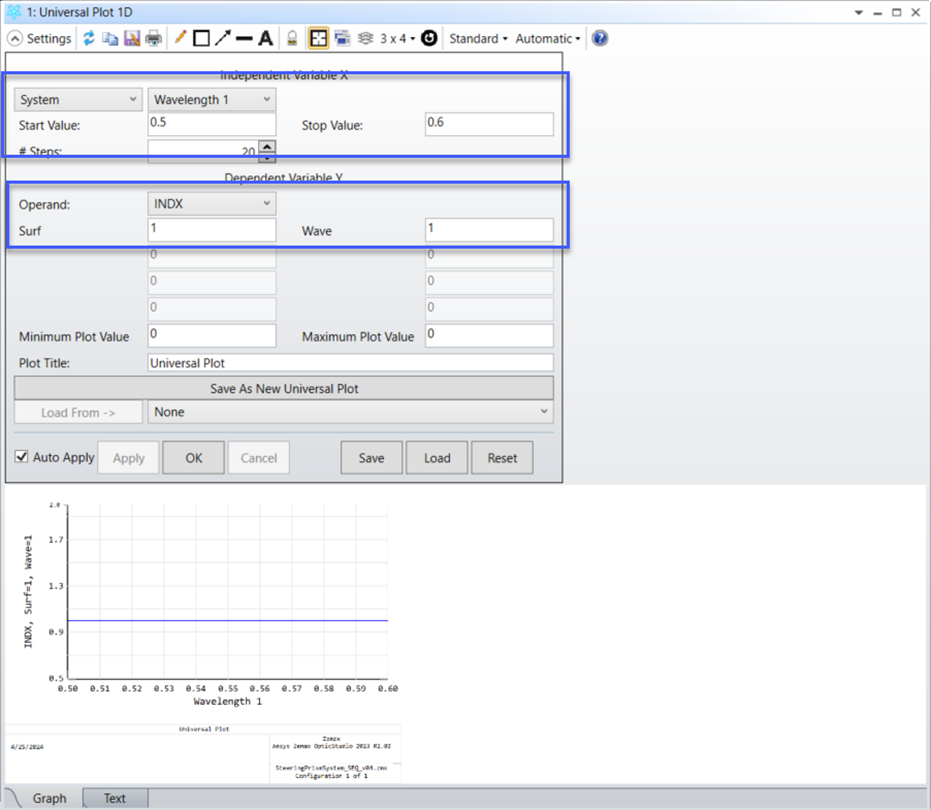There is a learning path that offers some useful guidance of material setup and algorithms of refractive index calculation. Materials – Knowledgebase (zemax.com)
[How to return the index of refraction at a specific wavelength]
There is a KBA that shows how to do it: How to return the index of refraction at a specific wavelength – Knowledgebase (zemax.com)
An alternative way is to use 1-D Universal plot using the INDX operand. Basically, we can sweep the Wavelength 1 value, then calculating the INDX operand value for Wave 1 on Surface 1. This will create a plot with the specified number of steps.

[How can I optimize the glass in sequential mode]
- Glass substitution, this method is suitable for the case that we need to consider materials that have special properties, for example, glasses suitable for molding or durable at extreme environmental conditions. See more details in this KBA:
- Model glass, this method is useful when we are doing the optimization in early stage. You can refer to this KBA for general information. How to use the Model Glass – Knowledgebase (zemax.com)
It’s important to ensure that it’s mimicking real material, using RGLA to constrain. The weight between the refractive index and Abbe number shall be balanced. Besides, if you know which glass type you prefer, flint or crown, you can use composite operand to constrain. You can pick suitable parameter A and B, so that “A*RefractiveIndex + B*AbbeNumber” is close to a certain value.
[How can I optimize/change material refractive index in NSC]
It’s described in this forum post: How to change refractive index of NSC objects in multi configuration editor. | Zemax Community The MCE(multi-configuration editor) could set some parameters as variable when they are not able to be modified in LDE. Another example is the aperture size of a surface.
[What shall I do if I only have material data at certain wavelengths (in other software)]
You can use table glass. How to enter glass data at specific wavelengths – Knowledgebase (zemax.com)



